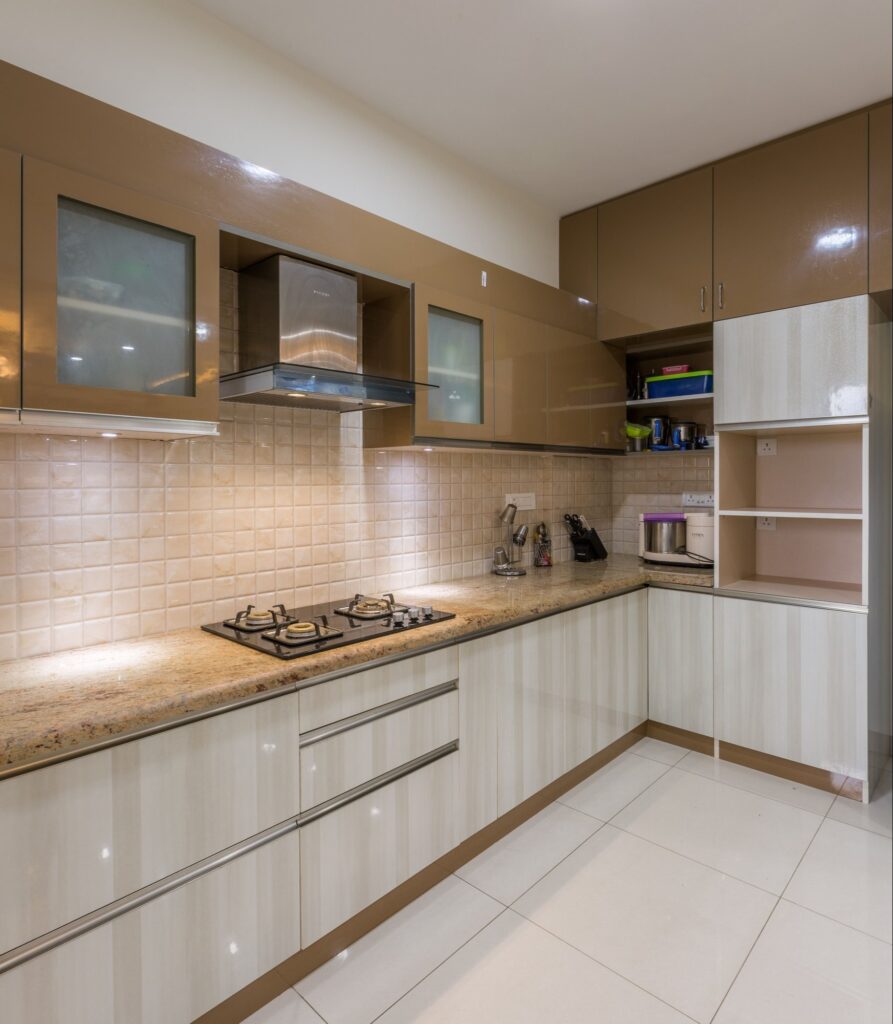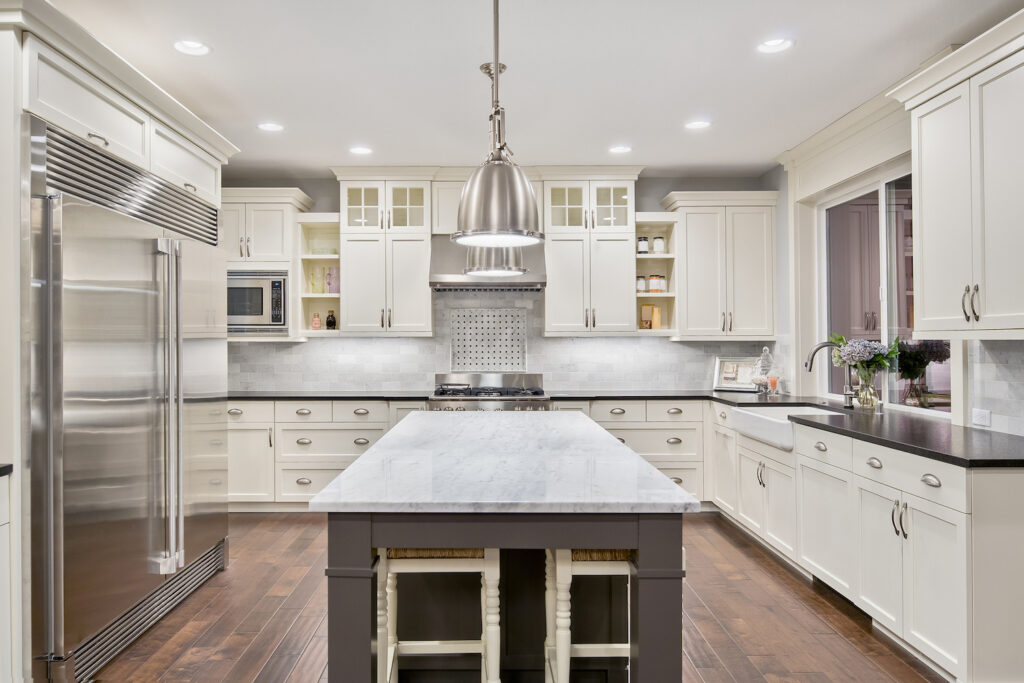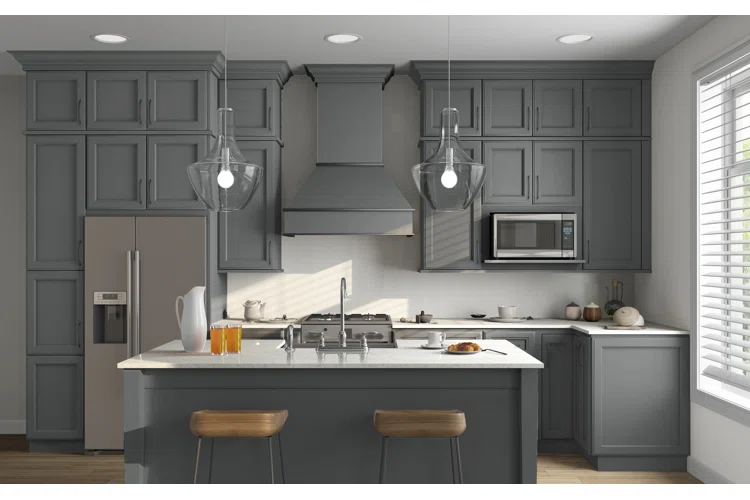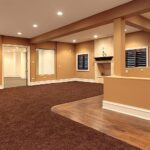When it comes to renovating or designing your kitchen, bathroom, or any other space requiring cabinetry, one of the fundamental decisions you’ll face is choosing between custom cabinets and prefab cabinets. Both options have their merits, but understanding the nuances between them can help you make an informed decision that aligns with your needs and preferences.
| Cost Factor | Custom Cabinets | Prefab Kitchens |
|---|---|---|
| Materials | Higher cost for premium woods, finishes, and customization | Lower cost for standard materials and finishes |
| Labor | Higher labor costs for custom design, construction, and installation | Lower labor costs for prefabricated assembly and installation |
| Customization | High level of customization with made-to-order designs, sizes, and configurations | Limited customization options within predetermined sizes and styles |
| Lead Time | Longer lead times (several weeks to months) for design and construction | Shorter lead times (days to weeks) for delivery and installation |
| Installation | More complex installation process, may require additional carpentry work | Simpler installation process, often designed for easy assembly |
| Resale Value | Can potentially increase home resale value due to custom features | May have a smaller impact on resale value |
| Total Cost | Typically higher overall cost, ranging from $15,000 to $50,000+ for an average-sized kitchen | Lower overall cost, ranging from $5,000 to $20,000 for an average-sized kitchen |
Custom Cabinets: Tailored to Your Needs
Custom cabinets offer the ultimate level of personalization. Crafted to fit your space perfectly, these cabinets are designed according to your exact specifications and preferences. From material selection to design details, every aspect can be tailored to suit your style and functional requirements.
Customization Options

One of the primary advantages of custom cabinets is the extensive range of customization options available. Whether you prefer traditional wood finishes or sleek modern designs, you have the freedom to choose the materials, colors, hardware, and accessories that best complement your space.
Material Selection
| Material Quality | Custom Cabinets | Prefab Kitchens |
|---|---|---|
| Wood Species | Wide range of premium hardwoods available, such as maple, cherry, oak, walnut | Typically use less expensive wood like particleboard or MDF with wood veneers |
| Wood Construction | Solid wood construction with dovetail or mortise and tenon joinery | Particleboard or MDF with wood veneers or laminates |
| Cabinet Boxes | Solid wood or plywood construction for added durability | Particleboard or MDF construction, may have lower durability |
| Shelves | Solid wood or plywood, adjustable shelving options | Particleboard or MDF, fewer adjustable options |
| Drawers | Solid wood or plywood with dovetail joints, soft-close options | Particleboard or MDF, basic drawer construction |
| Finishes | Wide range of high-end finishes, such as stains, paints, glazes, distressing | Limited finish options, often laminate or basic paint/stain |
| Hardware | Extensive selection of high-quality hinges, pulls, and other hardware | Standard hardware options, may be lower quality |
| Customization | Virtually unlimited customization options for design and construction | Limited customization options within predetermined sizes and styles |
| Longevity | Designed for long-lasting durability and can be refinished | Shorter lifespan, may need replacement sooner |
With custom cabinets, you have the opportunity to select high-quality materials that align with your aesthetic preferences and durability expectations. From solid hardwoods to exotic veneers, the choices are virtually limitless, allowing you to create cabinets that are both functional and visually stunning.
Design Flexibility
Unlike prefab cabinets, which are constrained by standard sizes and configurations, custom cabinets offer unmatched design flexibility. Whether you have an unconventional floor plan or unique storage needs, custom cabinetry can be tailored to maximize space efficiency and enhance functionality.
Prefab Cabinets: Convenience and Affordability

Prefab cabinets, also known as stock or ready-to-assemble cabinets, are pre-made units available in standard sizes and configurations. While they may lack the customization options of custom cabinets, prefab cabinets offer convenience and affordability for budget-conscious homeowners.
Ready-Made Solutions
Prefab cabinets are available off-the-shelf, making them an ideal choice for homeowners who require a quick and easy solution. With standardized sizes and configurations, prefab cabinets can be installed without the need for extensive customization or lead times.
Cost-Effectiveness
Compared to custom cabinets, prefab cabinets are typically more affordable due to their mass production and standardized designs. While they may not offer the same level of customization, prefab cabinets provide a cost-effective option for those working within a limited budget.
Limited Customization
Although prefab cabinets come in a variety of styles and finishes, they offer limited customization compared to their custom counterparts. While you may have some flexibility in terms of color and hardware options, prefab cabinets may not fully meet your specific design and functionality requirements.
Quality and Durability
When it comes to quality and durability, custom cabinets often outshine prefab cabinets due to their superior craftsmanship and materials.
Material Quality Comparison

Custom cabinets are typically constructed using premium materials and precise manufacturing techniques, resulting in a higher quality finished product. From hardwoods to composite materials, custom cabinets are built to withstand daily wear and tear while maintaining their aesthetic appeal.
Longevity of Custom Cabinets vs. Prefab Cabinets
While prefab cabinets can be a cost-effective option in the short term, they may not offer the same longevity as custom cabinets. Custom cabinets are built to last, with attention to detail and quality craftsmanship that ensures they withstand the test of time.
Installation Process
The installation process for custom and prefab cabinets differs significantly in terms of complexity and convenience.
Complexity of Installing Custom Cabinets
Installing custom cabinets requires careful planning and precise measurements to ensure a perfect fit. While this may involve additional time and effort, the end result is a seamless integration with your space that meets your exact specifications.
Ease of Installation with Prefab Cabinets
Prefab cabinets are designed for easy installation, with pre-drilled holes and standardized sizing that simplifies the process. Whether you choose to install them yourself or hire a professional, prefab cabinets offer a hassle-free solution for updating your space.
Aesthetics and Style
When it comes to aesthetics and style, custom cabinets offer unparalleled versatility and creativity.
Unique Designs with Custom Cabinets
Custom cabinets allow you to express your personal style and preferences through unique design elements and finishes. Whether you prefer a classic, timeless look or a bold, contemporary aesthetic, custom cabinetry can be customized to reflect your individual taste.
Standardized Styles with Prefab Cabinets
Prefab cabinets are available in a range of styles and finishes, but they lack the personalized touch of custom cabinetry. While you may find options that complement your decor, prefab cabinets are inherently limited in terms of design flexibility and customization.
Value Addition to Home
| Value Addition | Custom Cabinets | Prefab Kitchens |
|---|---|---|
| Home Resale Value | Higher potential to increase home resale value due to unique and high-end features | Limited impact on resale value, as prefab kitchens are more common and standard |
| Personalization | Allows for complete personalization to match the homeowner’s specific style, needs, and preferences | Limited personalization options within predetermined sizes, styles, and configurations |
| Durability | Built to last with premium materials and construction methods, can be refinished or repaired | Shorter lifespan, may need to be replaced sooner due to lower-quality materials |
| Storage Efficiency | Customized layouts and storage solutions optimize space and organization | Standard layouts may not be as efficient for specific needs |
| Aesthetic Appeal | Unique and distinctive designs, can be tailored to complement the home’s architecture and design | Standard designs may not blend seamlessly with the home’s style |
| Quality of Life | Improved functionality and ergonomics through customized features like pull-out shelves, specialized storage, and optimized layout | Standard features may not be as convenient or user-friendly |
| Environmental Impact | Potential for sustainable materials and construction methods, reduced waste with custom fitting | Mass production may lead to more waste and less sustainable practices |
| Pride of Ownership | A sense of pride and satisfaction in owning a one-of-a-kind, handcrafted kitchen | Prefab kitchens are more commonplace and lack the uniqueness of custom cabinetry |
Investing in quality cabinetry can enhance the value and appeal of your home, whether you opt for custom or prefab cabinets.
Impact on Property Value
Custom cabinets are often considered a valuable investment, as they contribute to the overall aesthetic and functionality of your space. By customizing your cabinets to suit your needs and preferences, you can enhance the marketability and resale value of your home.
Buyer Preferences
When it comes time to sell your home, custom cabinets may appeal to discerning buyers who value craftsmanship and quality. While prefab cabinets can be a practical choice, they may not offer the same level of desirability or perceived value among potential buyers.
Budget Considerations
Budget considerations play a significant role in determining whether custom or prefab cabinets are the right choice for your project.
Cost Comparison between Custom and Prefab Cabinets
Custom cabinets are typically more expensive than prefab cabinets due to the bespoke nature of their design and construction. While the initial cost may be higher, custom cabinets offer long-term value and durability that can justify the investment for many homeowners.
Hidden Costs to Consider
When comparing custom and prefab cabinets, it’s essential to consider any additional costs associated with installation, customization, and maintenance. While prefab cabinets may have a lower upfront cost, they may require more frequent replacements or repairs over time, adding to the overall cost of ownership.
Environmental Impact
As sustainability becomes an increasingly important consideration for homeowners, the environmental impact of cabinetry materials is worth exploring.
Sustainability of Materials
Custom cabinets offer the opportunity to select environmentally friendly materials that align with your sustainability goals. From FSC-certified woods to low-VOC finishes, there are numerous eco-friendly options available for custom cabinetry.
Carbon Footprint
Prefab cabinets are often mass-produced using standardized materials and manufacturing processes, which may have a higher carbon footprint compared to custom cabinets. By opting for custom cabinetry made from sustainable materials, you can minimize your environmental impact and contribute to a greener future.
Maintenance and Repair
Maintaining the appearance and functionality of your cabinets is essential for preserving their longevity and beauty.
Maintenance Requirements for Custom vs. Prefab Cabinets
Custom cabinets may require more frequent maintenance due to their higher quality materials and finishes. However, proper care and upkeep can help extend the lifespan of your cabinets and keep them looking their best for years to come.
Repair Options
In the event of damage or wear, both custom and prefab cabinets can be repaired or refinished to restore their appearance and functionality. While custom cabinets may offer more flexibility in terms of repair options, prefab cabinets can often be easily replaced or upgraded as needed.
Customer Satisfaction and Reviews
Feedback from homeowners who have installed custom or prefab cabinets can provide valuable insights into the pros and cons of each option.
Testimonials from Custom Cabinet Users
Many homeowners rave about the quality, craftsmanship, and personalized service they receive when opting for custom cabinets. From tailored storage solutions to unique design features, custom cabinetry can exceed expectations and enhance the overall enjoyment of your home.
Feedback on Prefab Cabinet Experiences
While prefab cabinets offer convenience and affordability, some homeowners may experience issues with quality, durability, or fit. By researching customer reviews and testimonials, you can gain a better understanding of the potential drawbacks and limitations of prefab cabinetry.
Case Studies: Success Stories
Examining real-life examples of custom and prefab cabinet installations can help you visualize the potential impact on your own space.
Examples of Homes with Custom Cabinets
From luxurious kitchens to elegant bathrooms, custom cabinets can elevate the aesthetic and functionality of any room. By investing in custom cabinetry, homeowners can create a truly unique and personalized living environment that reflects their individual style and preferences.
Instances Where Prefab Cabinets Were the Preferred Choice
Prefab cabinets are a practical option for homeowners who value affordability and convenience. Whether renovating a rental property or updating a vacation home, prefab cabinets offer a cost-effective solution that meets basic storage needs without breaking the bank.
Read More:
- 2-Door Sliding Wardrobe Designs: Maximizing Space and Style
- Front Elevation Tiles Designs for Home – Dream House Listing
Conclusion
In conclusion, the choice between custom cabinets and prefab cabinets ultimately depends on your budget, preferences, and priorities. While custom cabinets offer unmatched customization and quality, prefab cabinets provide a convenient and affordable solution for basic storage needs. By carefully evaluating the pros and cons of each option and considering factors such as budget, aesthetics, and long-term value, you can make an informed decision that enhances the beauty and functionality of your home.




Pingback: How Much Value Does a Finished Basement Add? - Dream House Listing
Pingback: Shower Door Ideas: Enhance Your Bathroom with Style and Functionality - Dream House Listing
Pingback: Elevate Your Kitchen: A Guide to Styling Upper Glass Cabinets - Dream House Listing